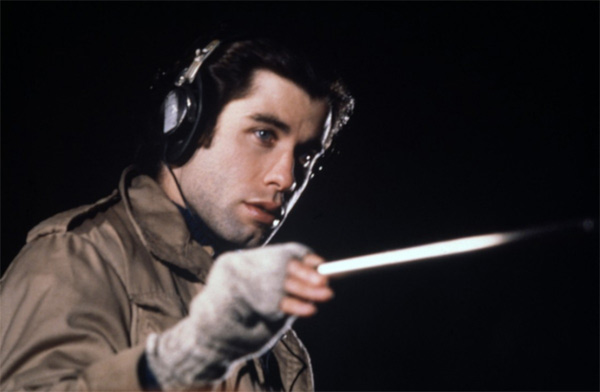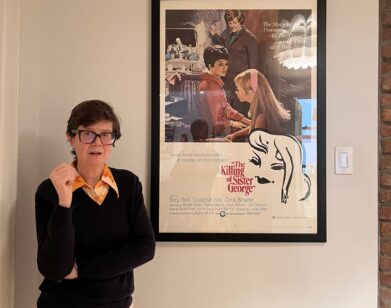The Sound and the Fury: Blow Out is Back

JOHN TRAVOLTA IN BRIAN DE PALMA’S BLOW OUT.
“De Palma has been learning how to make every move of the camera signify just what he wants it to, and now he has that knowledge at his fingertips. The pyrotechnics and the whirlybird camera are no longer saying ‘Look at me;’ they give the film authority.” First published in the July 27, 1981, issue of The New Yorker, long-time Brian De Palma supporter Pauline Kael’s review of Blow Out, praised the director and his cast—”Travolta finally has a role that allows him to discard his teenage strutting and his slobby accents”—for at long last finding his and their sweet spots. The review is available in Criterion’s packaging of the genre-bending thriller-cum-melodrama, and is worth reading for no other reason than to re-experience Kael’s capacity to pair snarky jabs with eulogizing hurrahs. Her educing portrait of Travolta’s co-star and De Palma’s then wife, Nancy Allen, as the helpless yet duping Sally, is also great and roves from “…she looks like a dumb-bunny piece of fluff,” to “Nancy Allen gives the film its soul.”
But enough about Kael on De Palma.
Blow Out is the story of Jack Terry (Travolta), a sound-effects technician working for an exploitation filmmaker in Philadelphia who, while recording wind on a bridge at a local park, witnesses a political assassination. The movie’s psychical relationship between sound and the moving image is its most rousing attribute. Does a sound without its source divulge more? Can the screech of a car careening into a river infer murder?
From the very first shot—which opens on an absurdly crass horror movie that Jack is dubbing, Co Ed Frenzy, a masked killer’s smooth Steadicam point of view capped by a botched and campy shower scream (an ongoing joke turned dark irony)—the film continually indicates De Palma’s resolve to compose each shot as if it were an idea. He elaborates on this concept in an interview with Noah Baumbach included in Criterion’s second disc: “In the beginning of a movie when the audience is ready for anything—to waste that time with some boring geography shot mystifies me.”
Assembled in two layers—film as artifice (the medium, its design and inner workings) framed by De Palma’s narrative—a somewhat hyperconscious viewing manifests. The sheer bulk of gear, equipment and machinery, of recording and photographic devices within the film, alert the audience, not only to Jack’s growing paranoia, but also to any and all onomatopoeic sounds that occupy a scene: the whooshing of hospital emergency doors, the bang of a gun, the ba-boom of heartbeats, the vroom of an engine, a toad’s croak, an owl’s unsettling hoot.
Thirty years after its premiere, Blow Out‘s obsessive style—Travolta’s physical ease as he wheels a projector, the patriotic blues and reds that soak each frame, or De Palma’s infinite focus and use of split diopter lenses, which Kael describes as “a twinkle in your thought processes”—remains thrilling.
BLOW OUT IS OUT NOW ON CRITERION BLU-RAY AND DVD. FOR MORE INFORMATION, VISIT CRITERION’S WEBSITE.






